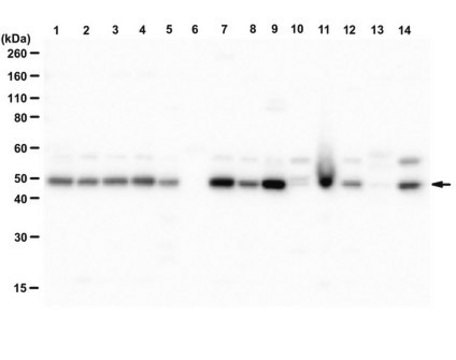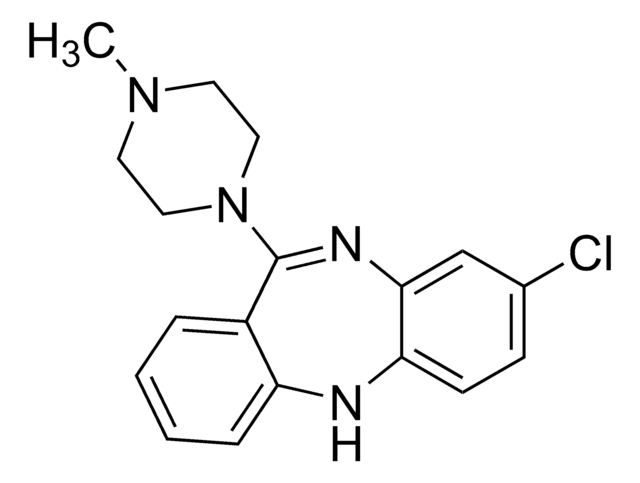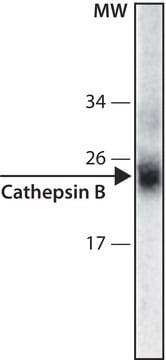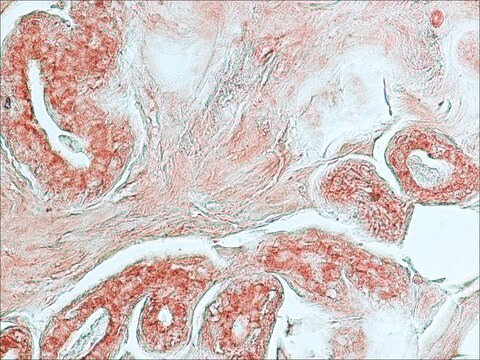C4618
Monoclonal Anti-Cathepsin L antibody produced in mouse
clone CPL33/1, purified from hybridoma cell culture
Sinónimos:
Anti-CATL, Anti-CTSL, Anti-MEP
About This Item
Productos recomendados
origen biológico
mouse
Nivel de calidad
conjugado
unconjugated
forma del anticuerpo
purified immunoglobulin
tipo de anticuerpo
primary antibodies
clon
CPL33/1, monoclonal
Formulario
buffered aqueous solution
mol peso
antigen ~25 kDa (human cathepsin L)
antigen ~42 kDa (human pro cathepsin L)
reactividad de especies
human
concentración
~2 mg/mL
técnicas
immunohistochemistry: suitable
indirect ELISA: suitable
western blot: 0.1-0.2 μg/mL using total cell extracts of A549 cells
isotipo
IgG1
Condiciones de envío
dry ice
temp. de almacenamiento
−20°C
modificación del objetivo postraduccional
unmodified
Información sobre el gen
human ... CTSL1(1514)
¿Está buscando productos similares? Visita Guía de comparación de productos
Categorías relacionadas
Descripción general
Especificidad
Inmunógeno
Aplicación
- immunohistochemistry
- indirect ELISA
- western blot : 0.1-0.2 μg/mL using total cell extracts of A549 cells
Acciones bioquímicas o fisiológicas
Forma física
Cláusula de descargo de responsabilidad
¿No encuentra el producto adecuado?
Pruebe nuestro Herramienta de selección de productos.
Opcional
Producto relacionado
Código de clase de almacenamiento
10 - Combustible liquids
Clase de riesgo para el agua (WGK)
nwg
Punto de inflamabilidad (°F)
Not applicable
Punto de inflamabilidad (°C)
Not applicable
Equipo de protección personal
Eyeshields, Faceshields, Gloves, type ABEK (EN14387) respirator filter
Elija entre una de las versiones más recientes:
Certificados de análisis (COA)
¿No ve la versión correcta?
Si necesita una versión concreta, puede buscar un certificado específico por el número de lote.
¿Ya tiene este producto?
Encuentre la documentación para los productos que ha comprado recientemente en la Biblioteca de documentos.
Nuestro equipo de científicos tiene experiencia en todas las áreas de investigación: Ciencias de la vida, Ciencia de los materiales, Síntesis química, Cromatografía, Analítica y muchas otras.
Póngase en contacto con el Servicio técnico








